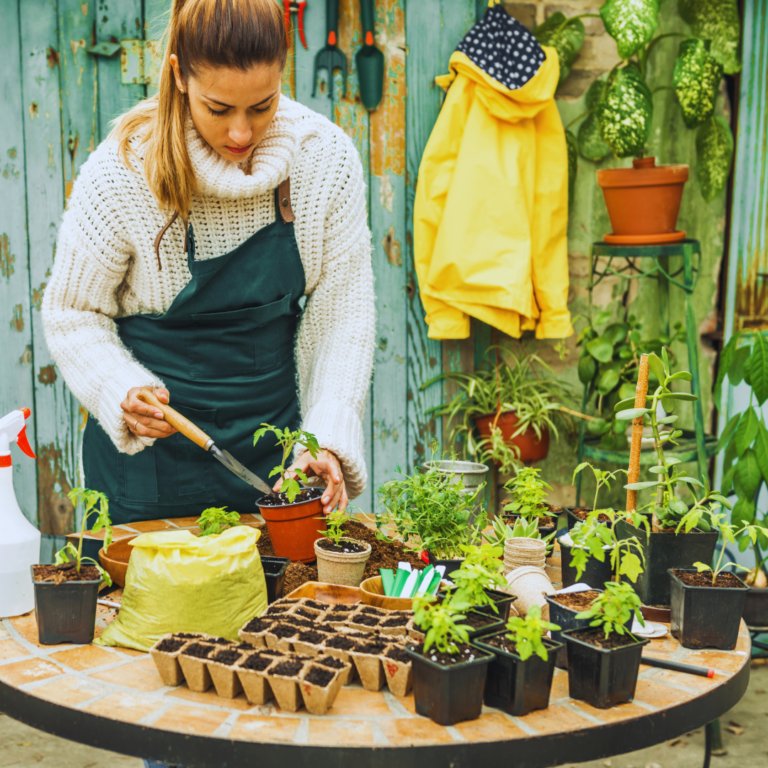
Creating a stunning garden does not need to break the bank. With careful planning and creativity, anyone can design a beautiful garden on a budget. Affordable gardening techniques can transform even the simplest outdoor space into a lush oasis.
Key strategies include selecting native plants, utilizing DIY designs, and repurposing materials. These approaches not only save money but also encourage a sustainable garden environment. By focusing on cost-effective solutions, individuals can achieve a picturesque garden that reflects their style without financial strain.
Planning Your Budget Garden
Creating a beautiful garden on a budget involves careful planning. Key aspects include evaluating the space, choosing the right plants, and designing an effective layout. Each step plays a crucial role in ensuring the garden is both aesthetically pleasing and financially manageable.
But it’s not just about the plants. Adding functional structures can make a big difference in how the garden looks and feels. For example, a Composite Garden Room can offer a low-maintenance space that can be tailored to suit personal tastes and needs.
Or perhaps a pergola placed in the heart of the garden, with a cosy seating area beneath it, can create a charming spot for gathering. Small touches like these can elevate the entire space without breaking the bank.
These modern structures offer a smart way to maximize garden potential, ensuring both beauty and practicality for years to come.
Evaluating Space and Conditions
A successful garden starts with an assessment of available space and environmental conditions. Consider the size of the area, sunlight exposure, and soil quality.
- Sunlight: Identify how many hours of direct sunlight the area receives. This influences plant selection.
- Soil Quality: Test the soil to determine pH and nutrient levels. Incorporate organic matter to enrich it if necessary.
Establishing boundaries, such as fences or garden beds, can define the space, creating a cohesive look while maximizing plant growth. If there are any old stamps, get them removed with the help of stump grinding services, to make room for more open and usable landscape.
Choosing the Right Plants
Selecting appropriate plants is essential for a budget garden. Focus on native species or low-maintenance options like succulents and climbing plants.
- Native Plants: They require less water and care, making them economically viable.
- Succulents: These plants thrive in various conditions and need minimal irrigation.
Consider incorporating a mix of greenery for texture. Plants that grow vertically can maximize small spaces. Research plants that are resilient and suited for the climate, ensuring long-term success without high costs.
Creating a Garden Layout
Designing the layout requires strategic planning to maximize visual appeal and functionality. Start with a sketch of the garden, outlining different areas, such as seating, flower beds, pathways, and lighting.
- Zones: Creating distinct zones in the garden allows each type of plant to thrive under the conditions it prefers, whether full sun, partial shade, or moist soil. Grouping plants with similar watering and care needs also simplifies maintenance. Additionally, separating areas for activities like seating, dining, or tool storage enhances both functionality and flow in the outdoor space.
- Pathways: Installing pathways with budget-friendly materials such as gravel or mulch not only enhances the look of the garden but also makes it more accessible. These materials are easy to lay down, require minimal upkeep, and help prevent soil erosion. Clear paths also create a natural flow, guiding visitors through different sections of the garden with ease.
- Lighting: Opt for low voltage landscape lighting such as LED path lights, solar-powered stakes, or string lights. These options are energy-efficient, cost-effective, and add a warm, inviting glow to the garden during evenings. Strategically placed lighting can also highlight key features like flower beds, walkways, or seating areas while improving safety.
Also, utilize vertical space by adding trellises for climbing plants. This twist can create an illusion of space while allowing for creative plant arrangements. The layout should facilitate easy maintenance and accessibility.
Selection and Use of Plants
Choosing the right plants is essential for a beautiful garden on a budget. Thrifty options, potted plants, and vertical gardening techniques can create vibrant spaces without high costs.
Thrifty Plant Choices
Selecting budget-friendly plants can significantly reduce costs. Native plants often thrive with minimal maintenance and adapt well to local conditions. This leads to lower watering needs and fewer pests.
Consider succulents for low-water areas. They store moisture and are both decorative and hardy. Perennials are another excellent choice. Unlike annuals, they return each year, providing ongoing beauty.
Shopping at local nurseries or garden centers can yield sales or discounts on overstock plants. Sharing plants with friends or participating in plant swaps can also enhance garden diversity without spending money.
Utilizing Potted Plants
Potted plants offer flexibility and style to any garden space. They can be strategically placed to enhance appearance and define areas. Utilizing hanging baskets can add dimension and color at different heights.
When selecting pots, it’s helpful to choose styles that complement the overall look of the garden. Terracotta, ceramic, or colorful plastic options can enhance the natural features of the plants. For group plantings, planters made of metal or stone, such as those available from Plantercraft, can offer an elegant option that blends well with a variety of outdoor settings.
Potted plants are also easily movable, allowing for seasonal arrangement changes. Using affordable potting soil can keep costs down while still ensuring plants thrive. Regular maintenance is key to keeping potted plants vibrant and healthy.
Incorporating Vertical Greenery
Vertical gardening maximizes space and introduces dynamic elements. Climbing plants, such as vines, are ideal for trellises or fences. These plants create lush backdrops and can help create privacy.
Installing a vertical garden system with pockets or shelves allows for growing a range of plants, from herbs to flowers. This approach is excellent for small areas or urban environments.
Consider utilizing wall-mounted planters for added style. They not only improve aesthetics but also contribute to the air quality. Vertical gardens require regular maintenance but yield great rewards in visual interest.
Gardening Tools and Accessories
Selecting the right tools and containers is essential for managing a budget-friendly garden. Affordable, high-quality tools and creatively repurposed containers can significantly enhance the gardening experience without straining finances.
Finding Affordable Tools
When searching for gardening tools, quality should not be sacrificed for price. Local hardware stores often offer discounts, especially during seasonal sales. Look for sets that provide essential tools, such as:
- Hand trowels
- Pruners
- Garden forks
- Hoe
Online marketplaces frequently have sales or second-hand options available. It is wise to check community groups or swap meets where tools are exchanged.
Before purchasing, consider brands known for durability but also affordability. Purchasing multi-tools can also save money. They combine functions like a shovel, rake, and hoe into one tool. This reduces the number of individual tools needed.
DIY and Repurposed Containers
Innovative gardeners can create stunning plant containers at minimal expense. Common household items can be transformed into planters. Examples include:
- Old tires: Provide durable, raised garden beds.
- Wooden pallets: Can be converted into container gardens.
- Plastic bottles: Ideal for small plants and herbs.
Visual appeal can be achieved with paint or decor. This not only saves money but also adds personality to the garden.
Utilizing these alternative containers supports sustainability practices. Creativity can lead to unique garden displays while reducing waste. Cost-effective solutions often yield the most charming results.
